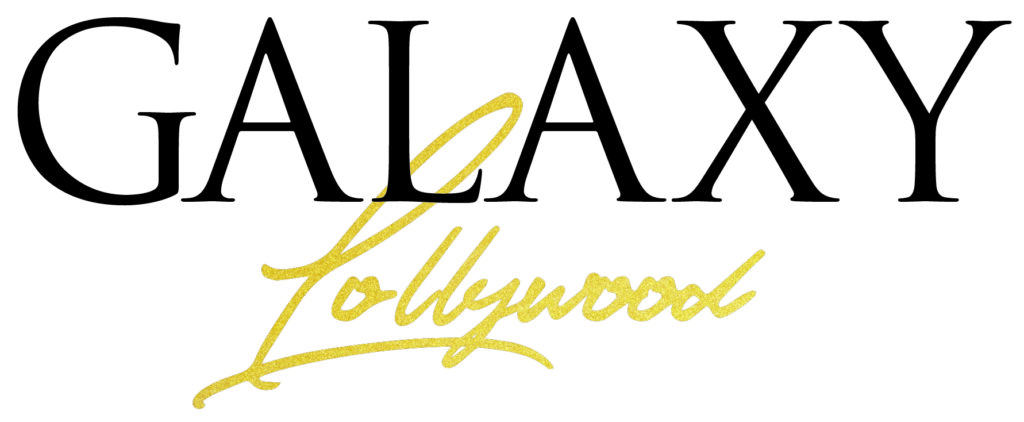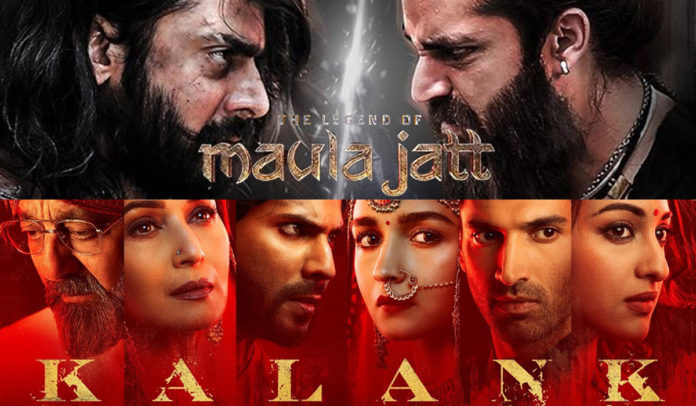When the teaser of The Legend of Maula Jatt was dropped, it created ripples across the film-buffs community of the subcontinent. Garnering rave reviews from both; the home ground and across the border, the teaser trailer, according to entertainment.pk, has become Pakistan’s most viewed trailer on social media platforms.
Just yesterday, one of Bollywood’s most anticipated films of 2019 – Kalank – also dropped its teaser trailer and left many in awe on account of its grandeur, dark, gritty nature and the staple Bollywood masalah; something our biggest film for 2019 aka Maula Jatt, obviously lacks.
Maula Jatt Vs. Kalank
As for the comparison between the two teasers, The Legend of Maula Jatt takes the lead for its obviously better cut and an aura that conveys the overall mood of the film, rather aptly. Kalank, on the other hand, takes the edge because of its grander palette (something expected of Bollywood considering how big and resourceful the industry is) and its seemingly smart strategy to keep things more mass oriented by adding the usual songs and dance sequences.
Personally, I believe that good content is more important than fillers such as songs or dance sequences. However, the importance of such fillers cannot, at the same time, be undermined for they add mass appeal to the otherwise bland films. Moreover, they have also been a distinct part of the subcontinent cinema, over the years.
Generations after generations have grown up, seeing superstars dance to the melodious tunes created by the legendary musicians of Indo-Pak cinema, making them a telltale feature of every desi film’s anatomy.
Some examples from the history
There are numerous examples of films that became major hits, on the basis of their music or merely a song. Keeping aside Bollywood for a second, our very own local cinema is rife with such cases where a film’s music would make it a box office success.From Reema & Shaan starer Bulandi to Syed Noor’s blockbusters Jeeva, Sangam, Ghunghat and Choorian to Sangeeta’s biggest hit Nikah, all had chart-buster music at their back to support them.
Syed Noor’s Sargam starring Adnan Sami Khan and Zeba Bakhtiar remained etched onto our memories, for a long time only because of its music. Sajjad Gul’s action flick Ghar Kab Aogey would have been a dud, had it not been for its songs that featured Noor and Meera Jee dancing to melodious tracks, created by Amjad Bobby.
Pakistani cinema’s revival film Khud Ke Liye had music that stayed in our playlists for the longest time. Amidst all this, the one film that remains an exception is Bilal Lashari’s Waar. The film didn’t have any songs and dance sequences, yet it did wonders at the Box Office. Mauj-e-Naina featuring Meesha Shafi and Shamoon Abbasi had some classy seductive performances that were beautifully incorporated with some intense action sequences, but the song lacked any ‘playlist value’ on the whole.
On why mass appeal is important
Now the reason I mention so many examples is to shed light on the fact that when cinema becomes mass-centric, the film makers have to cater to what their audience demands.
They can utilize whatever space (albeit a limited one) is available to them, to mould their cinematic product, in line with their own artistic sensibilities (like Bilal Lashari did with Mauj e Naina in Waar) but at the end of the day, they have to consider what the audiences demand.
Over the past few years, audiences have started to point out how Pakistani movies have started to look more and more like dramas. One of the reasons is an obvious lack of grandeur and the larger than life feels. The reason JPNA worked and Moor didn’t wasn’t because the former is better or the latter is bad, it’s because Nadeem Baig made a film that masses wanted to see while Jami’s focus was to make a film that “he wanted to see (and make)”.
A cinema, at this stage, that caters to classes rather than masses is barely sustainable. Same is true for Punjab Nahi Jaungi and Motorcycle Girl. The former possesses a mass appeal while the latter caters to a niche audience.
A middle ground between the two extremes is what our filmmakers should strive for, at this point in time. Now, The Legend of Maula Jatt, from its trailer, appears to be devoid of colors or any mass appeal. It doesn’t have any songs or even colors to keep the audience on their feet. According to sources, the LOMJ doesn’t have any such song sequences and people close to Bilal Lashari have vehemently tried to persuade him to add one to the film.
Lashari hasn’t agreed to the suggestions yet but we hope that he takes some inspiration from its Indian counterpart Kalank and adds some mass appeal to what, otherwise, looks like a brilliant film. A musical cinematic mass appeal, is all the masses ask for, is it too much to ask for?




